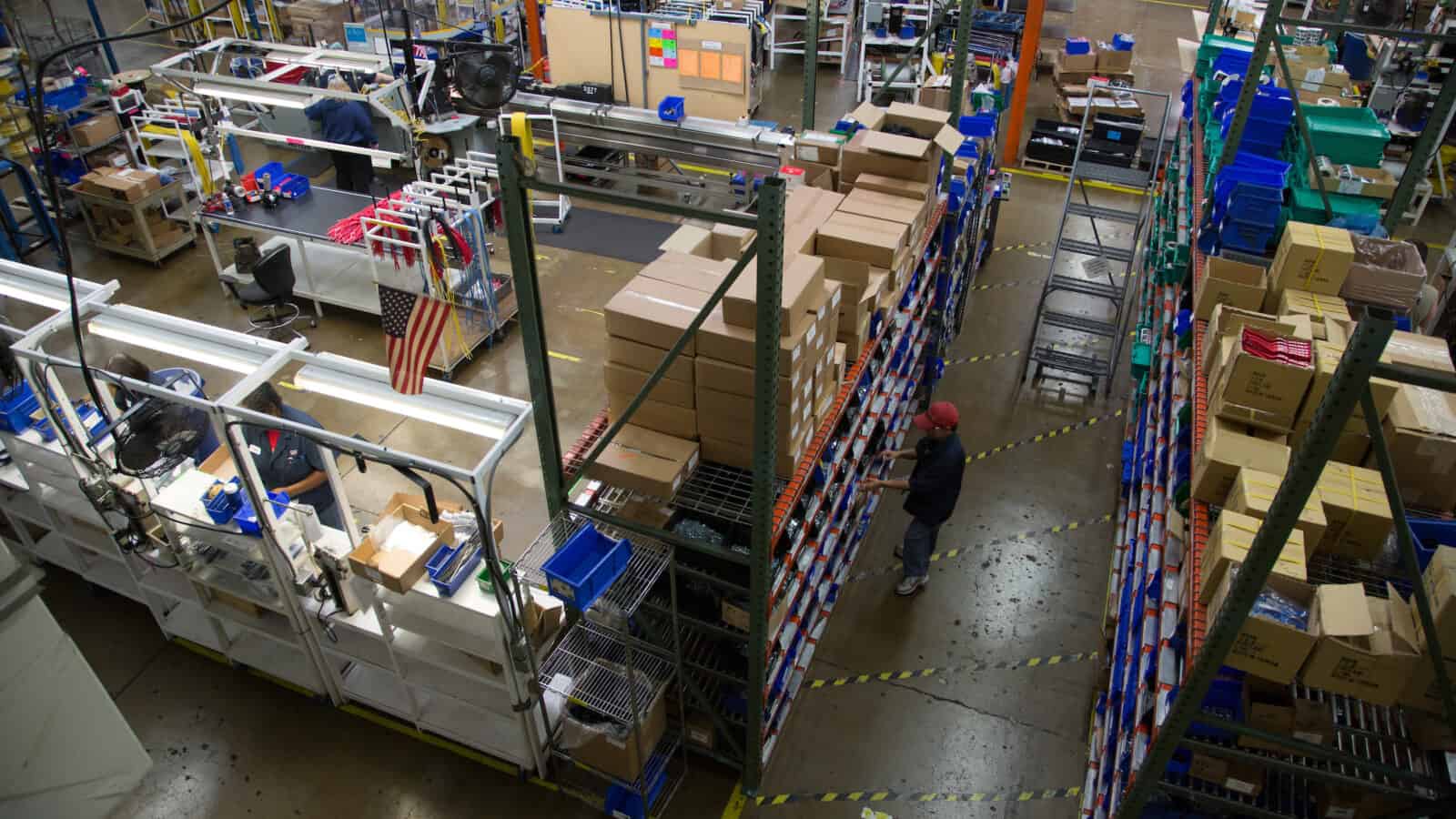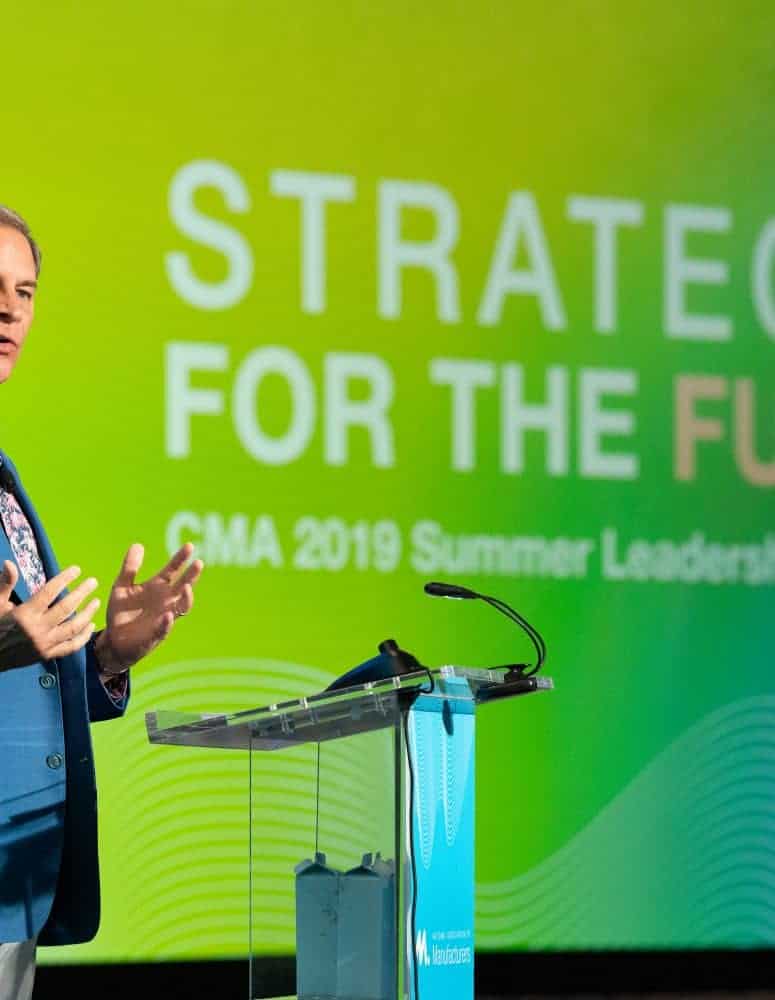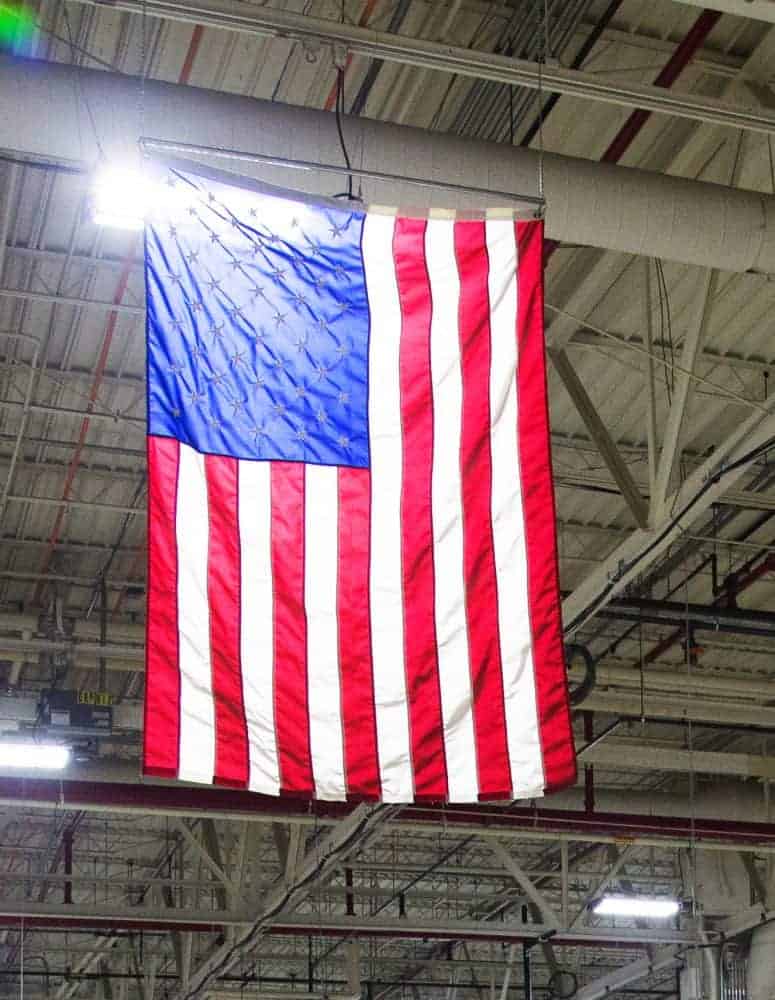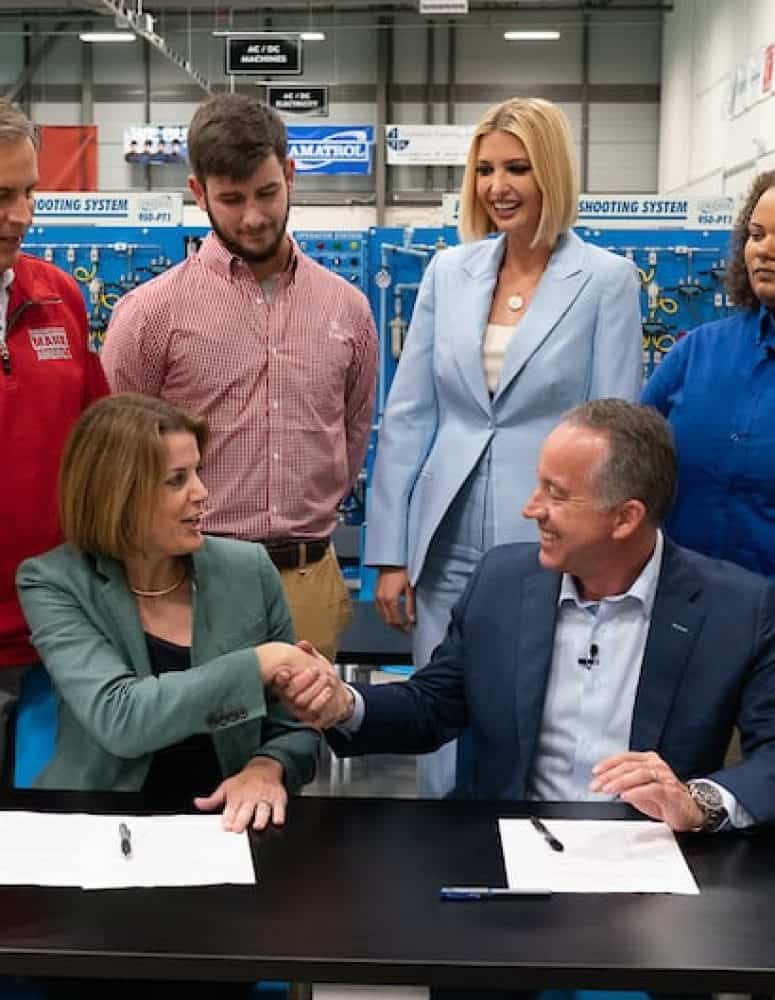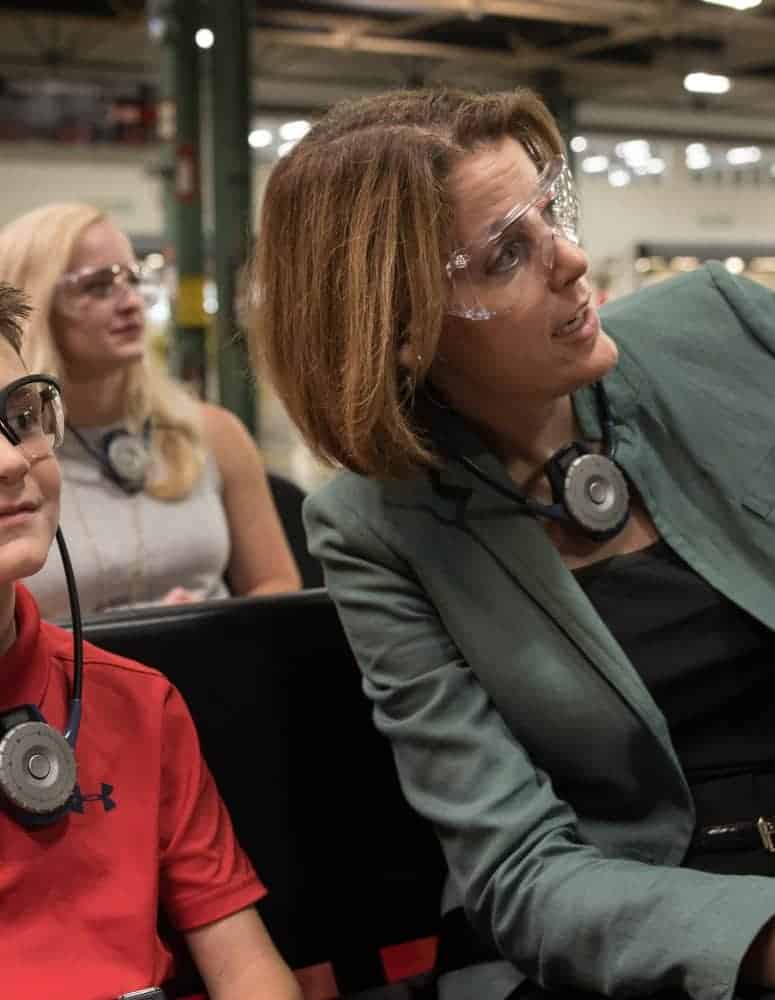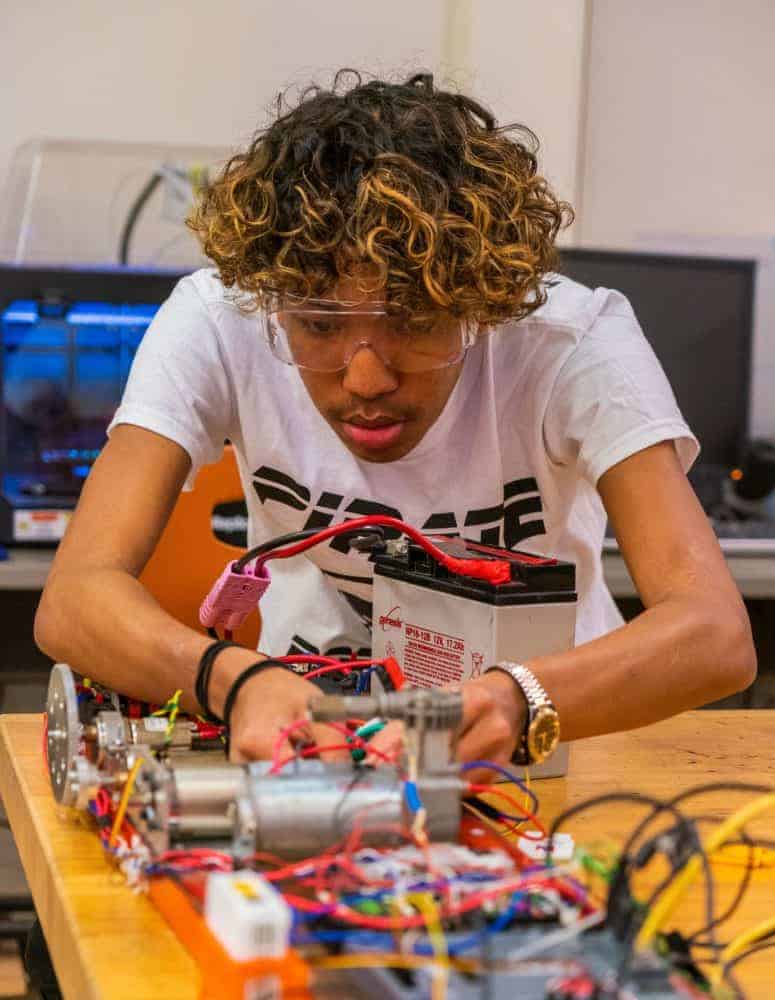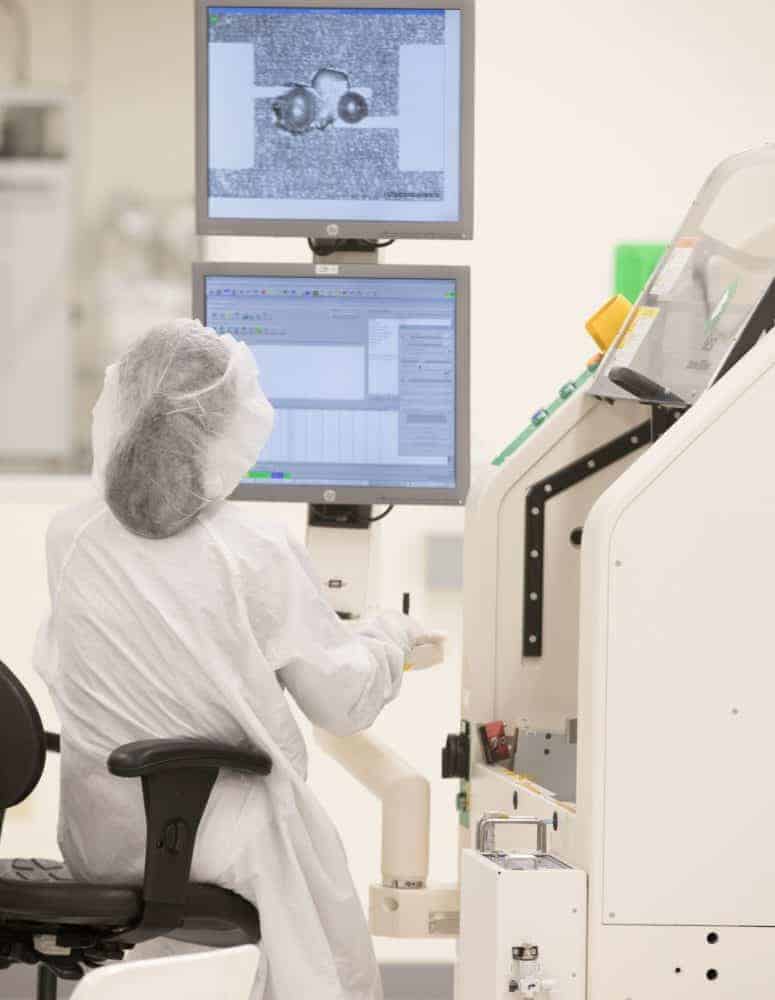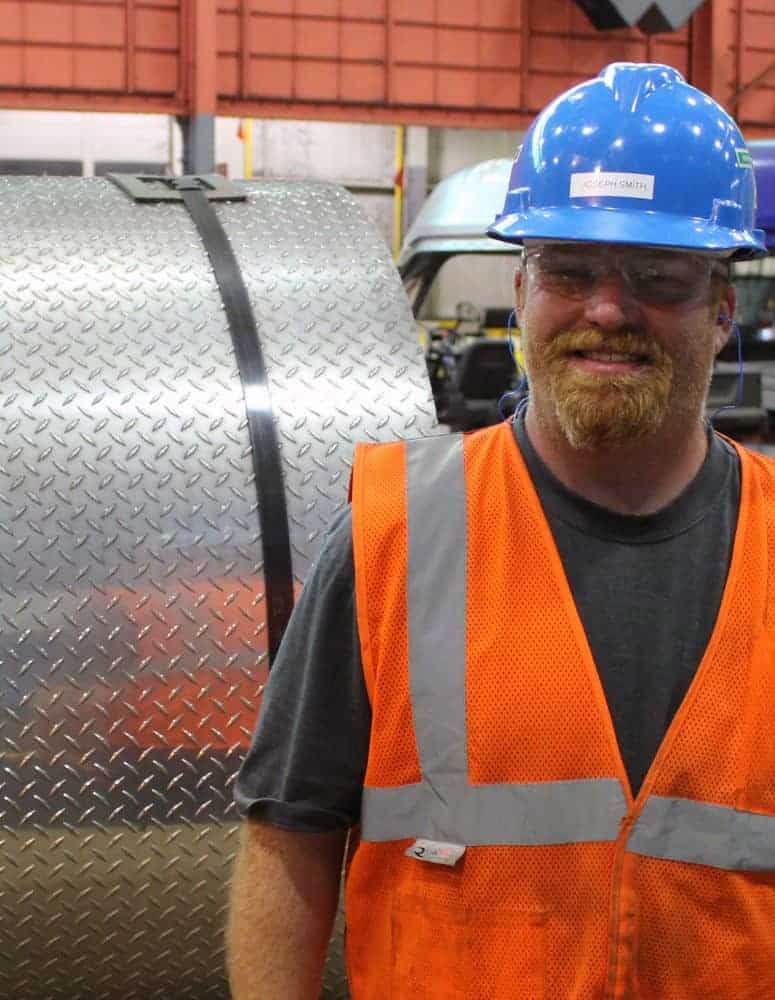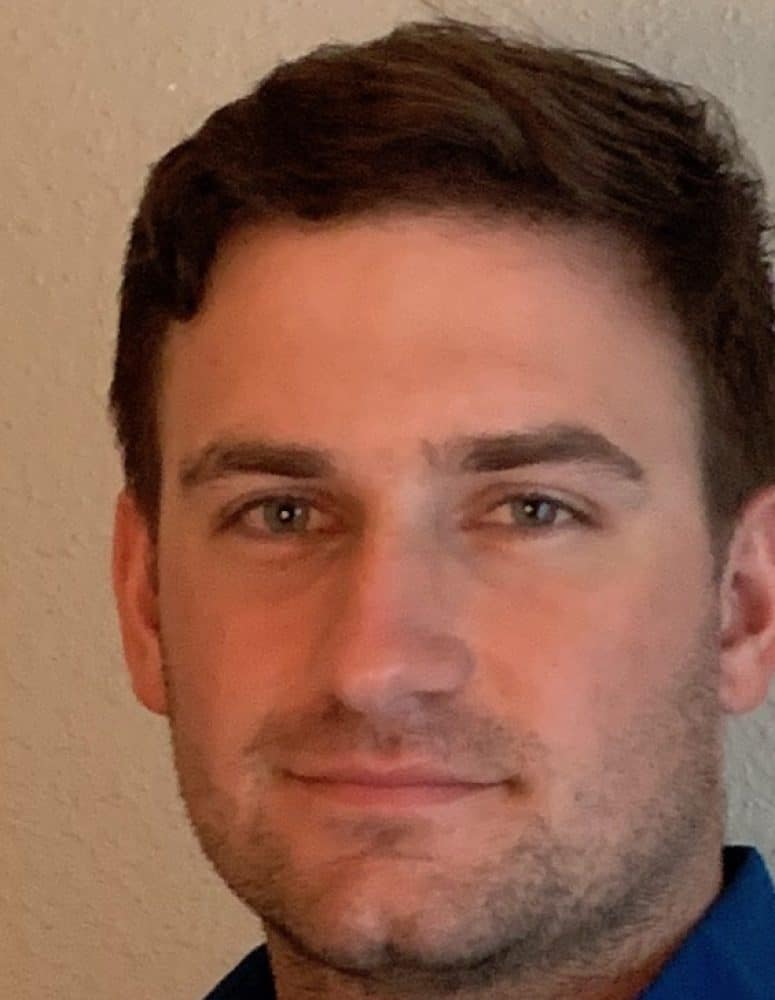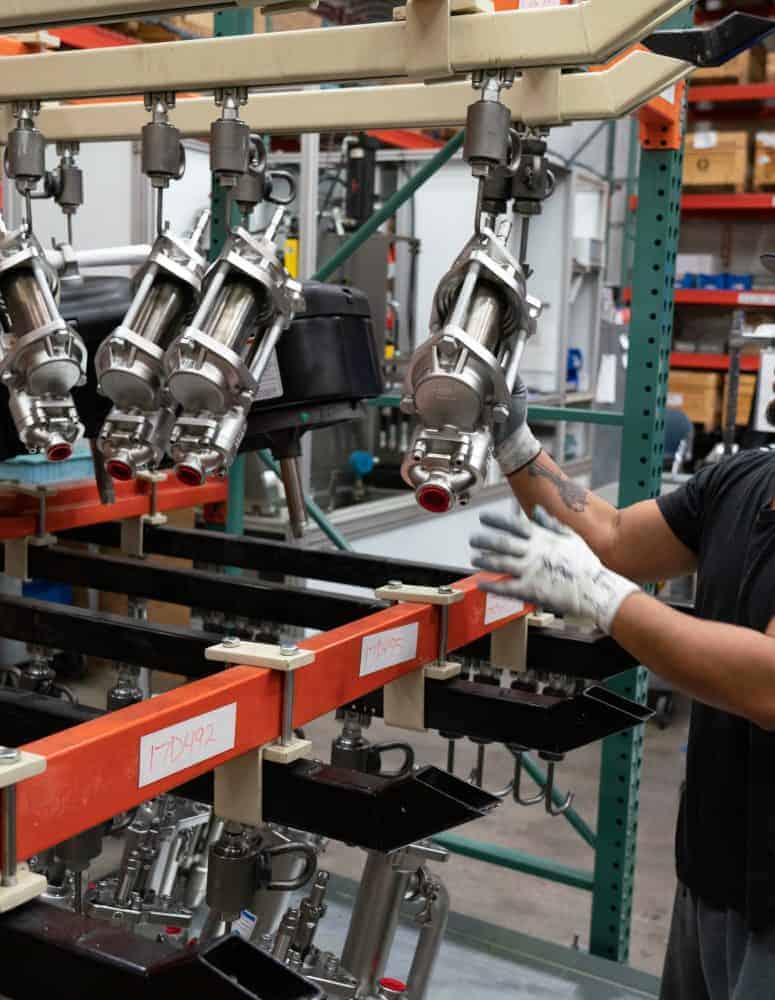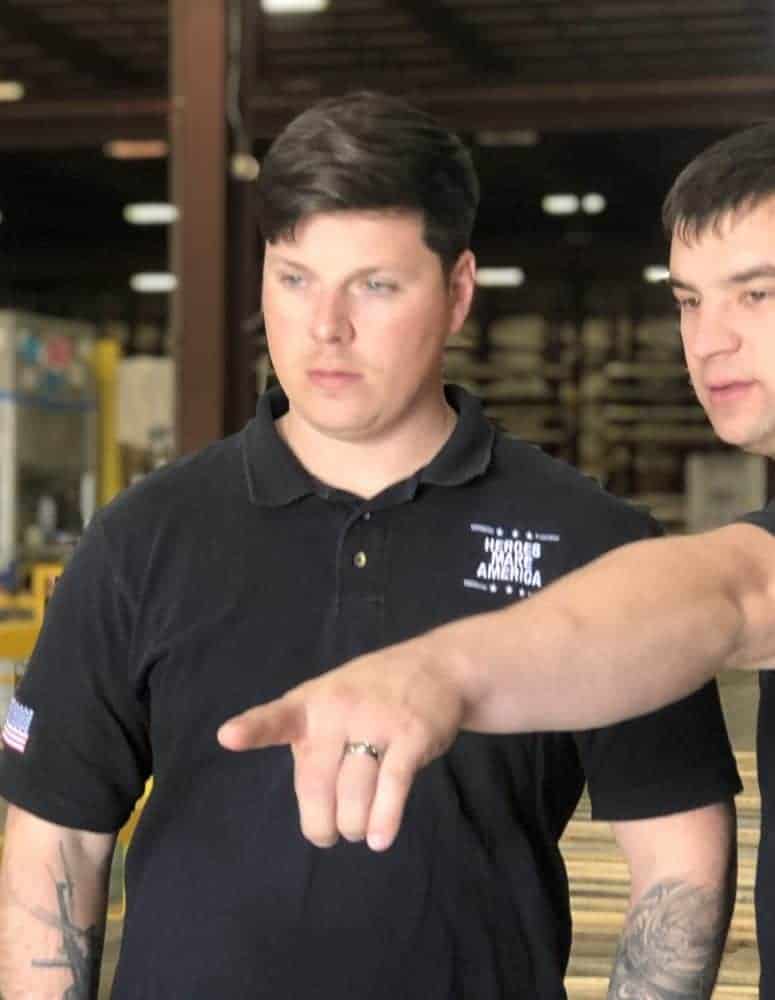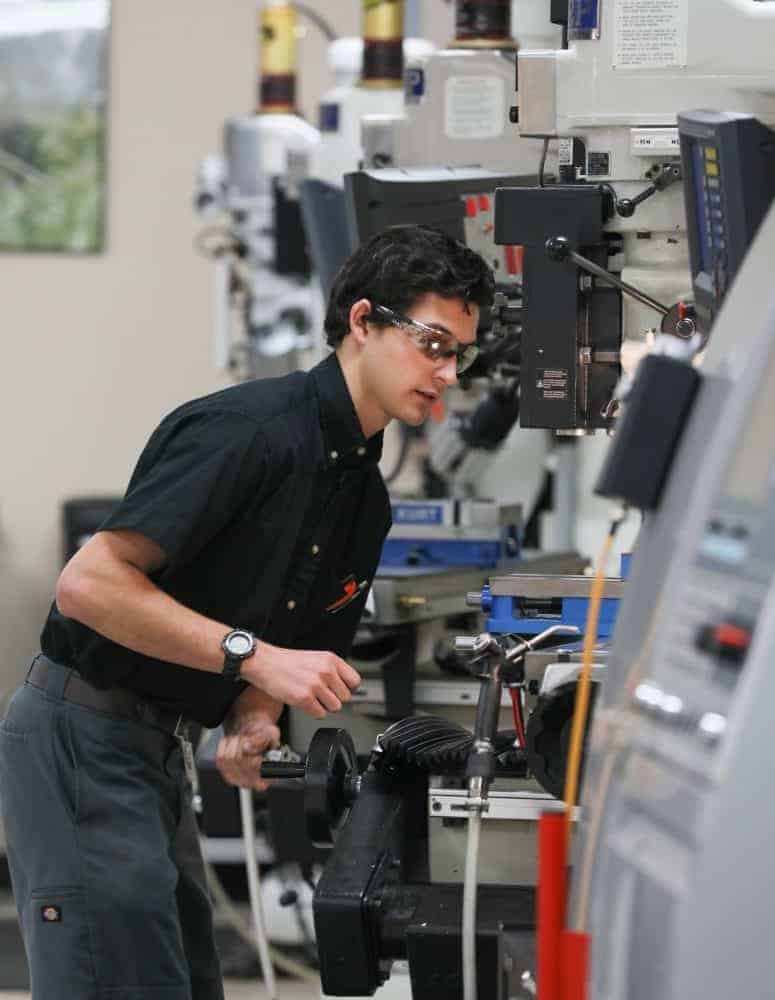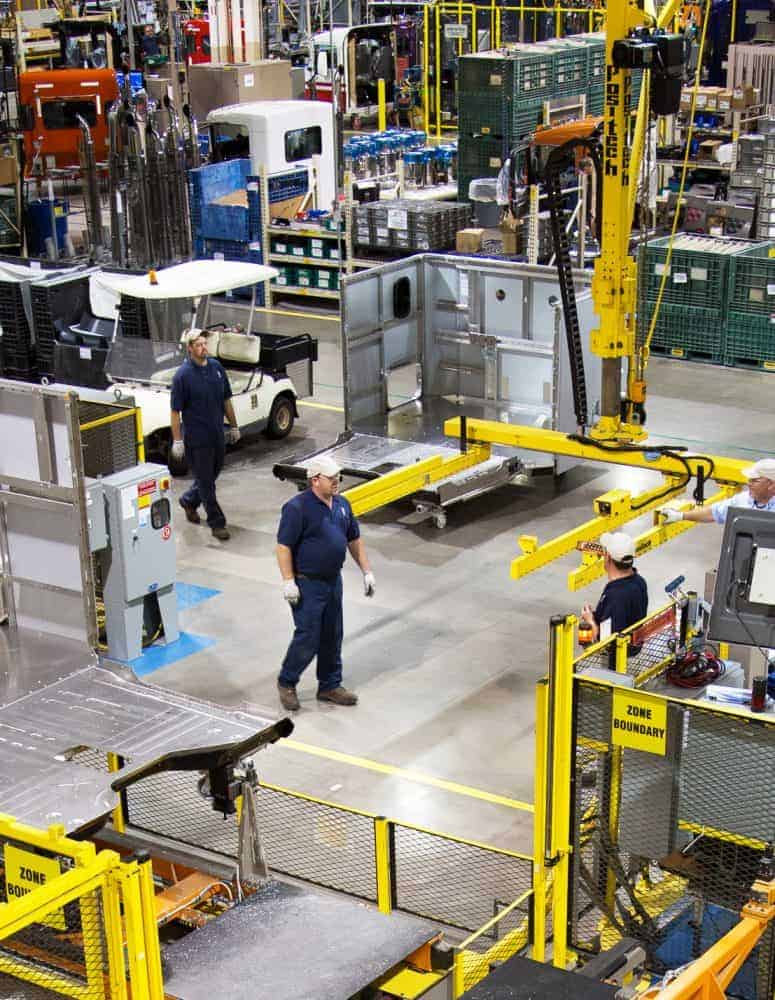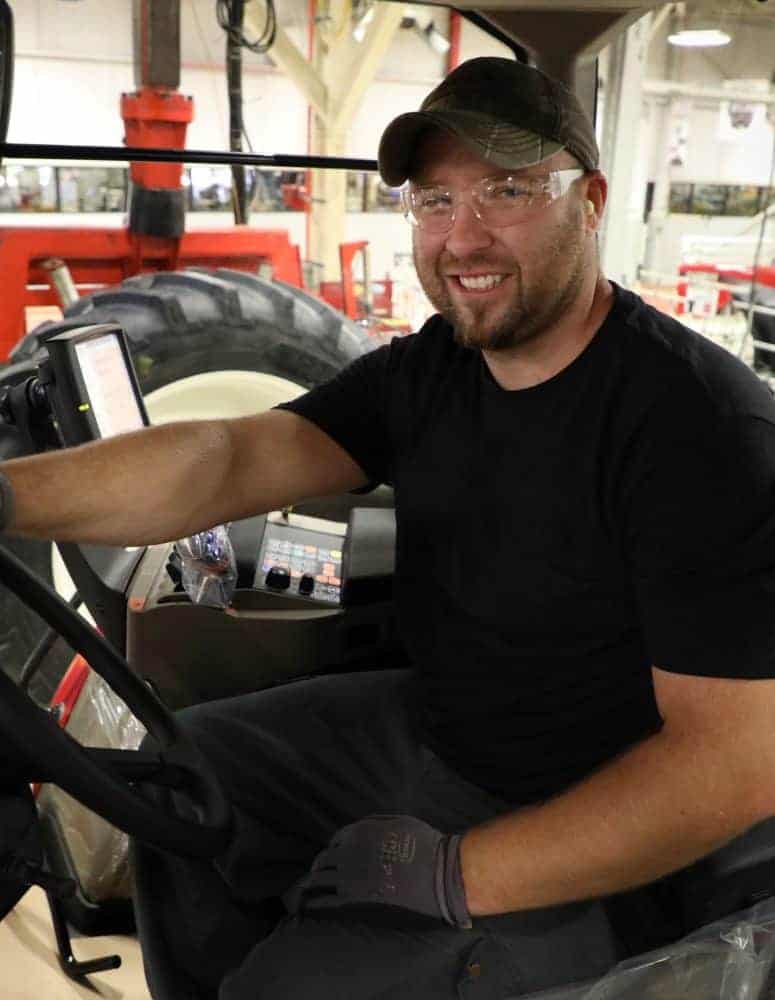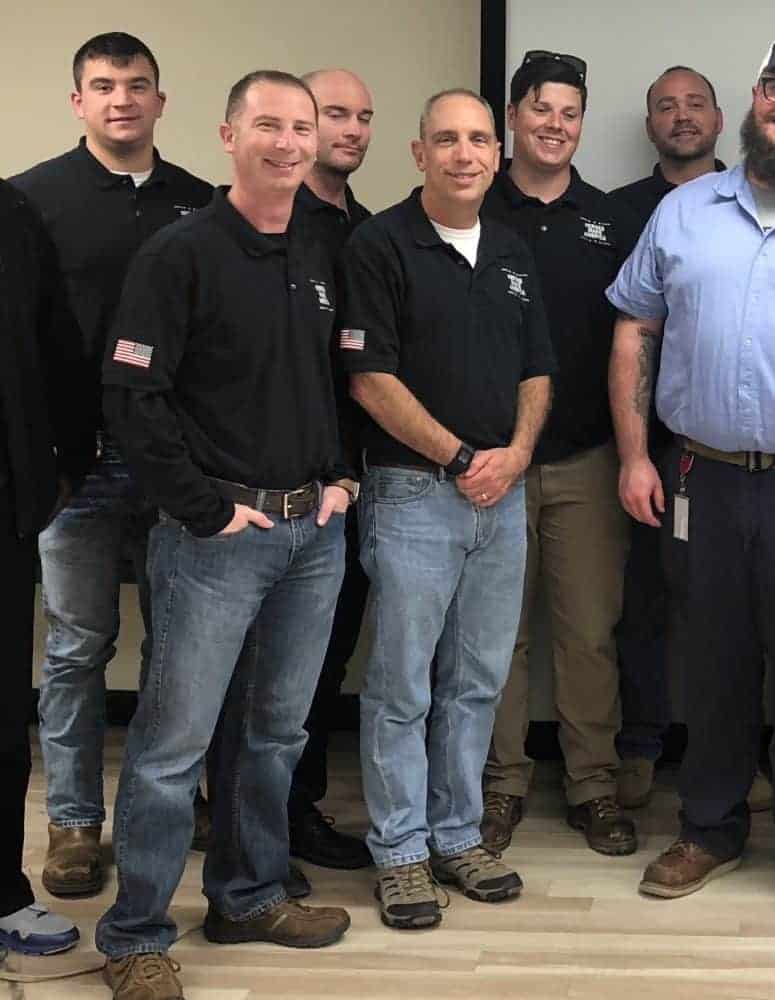Manufacturing Institute, NAM and Samsung Seek Creators at MFG Day Event in South Carolina
MFG Day Kicks Off a Month-Long Celebration of Manufacturing—Connecting with the Future Workforce to Fill Manufacturing Skills Gap
Washington, D.C. – National Association of Manufacturers President and CEO Jay Timmons traveled to Newberry, South Carolina, today to kick off Manufacturing Day at a flagship event hosted by Samsung. MFG Day, spearheaded by The Manufacturing Institute, the education and workforce partner of the NAM, gives students the opportunity to peak behind the curtain and see what modern manufacturing looks like, aiming to inspire them to pursue careers in the industry.
Timmons joined South Carolina Gov. Henry McMaster and Samsung Executive Vice President and Head of Corporate Affairs David Steel at the Samsung Electronics Home Appliance facility—the company’s first home appliance manufacturing facility in the United States. The group met with students, business leaders and community influencers to discuss the high-tech, well-paying opportunities in modern manufacturing and the growing number of open jobs at manufacturing facilities across the country.
“Manufacturers across the country are seeking creators—those individuals who want to help solve tomorrow’s challenges today,” said Timmons. “Our industry is growing, and we need passionate, driven individuals to join our ranks. As the skills gap widens, 2.4 million positions across the manufacturing industry could go unfilled by 2028, so we must work to attract and develop new talent. Through MFG Day, we are engaging with the next generation of manufacturers—students—and letting them know our industry’s rallying cry: ‘Creators Wanted.’”
Timmons, Steel and Gov. McMaster were joined by students from Newberry Middle School. The group toured the state-of-the-art factory where Samsung manufacturers many of the home appliances sold in stores across the country. Following the tour, Timmons and Gov. McMaster gave brief remarks to the group, followed by a discussion with the head of human resources, Sherri Satterfield, about ways to inspire more students to pursue careers in modern manufacturing.
“We are proud to work with the National Association of Manufacturers and The Manufacturing Institute to engage students and help demonstrate the opportunities modern manufacturing has to offer,” said Steel. “There are more manufacturing jobs available in South Carolina than there are people to fill them. Opportunities for those seeking a rewarding, high-paying career in manufacturing truly abound.”
According to the latest data from the NAM, South Carolina manufacturers account for 17% of the state’s output, totaling $37.15 billion. In addition, the state has more than 247,000 manufacturing employees across 3,390 companies with an average compensation of more than $72,000.
MFG Day is led by The Manufacturing Institute. First held in 2012 and organized by its founder—the Fabricators & Manufacturers Association, International—MFG Day gives manufacturers the opportunity to address the skills gap, connect with future generations, update the public perception of manufacturing and ensure the ongoing prosperity of the industry as a whole. Learn more about MFG Day and the significant impact this event has across the nation here.
-MI-
The Manufacturing Institute is the education and workforce partner of the National Association of Manufacturers. It drives programs and research to promote modern manufacturing and jumpstart new approaches to growing manufacturing talent. For more information, please visit www.themanufacturinginstitute.org.
Today is #MFGDay19
Manufacturers Open Their Doors on Manufacturing Day
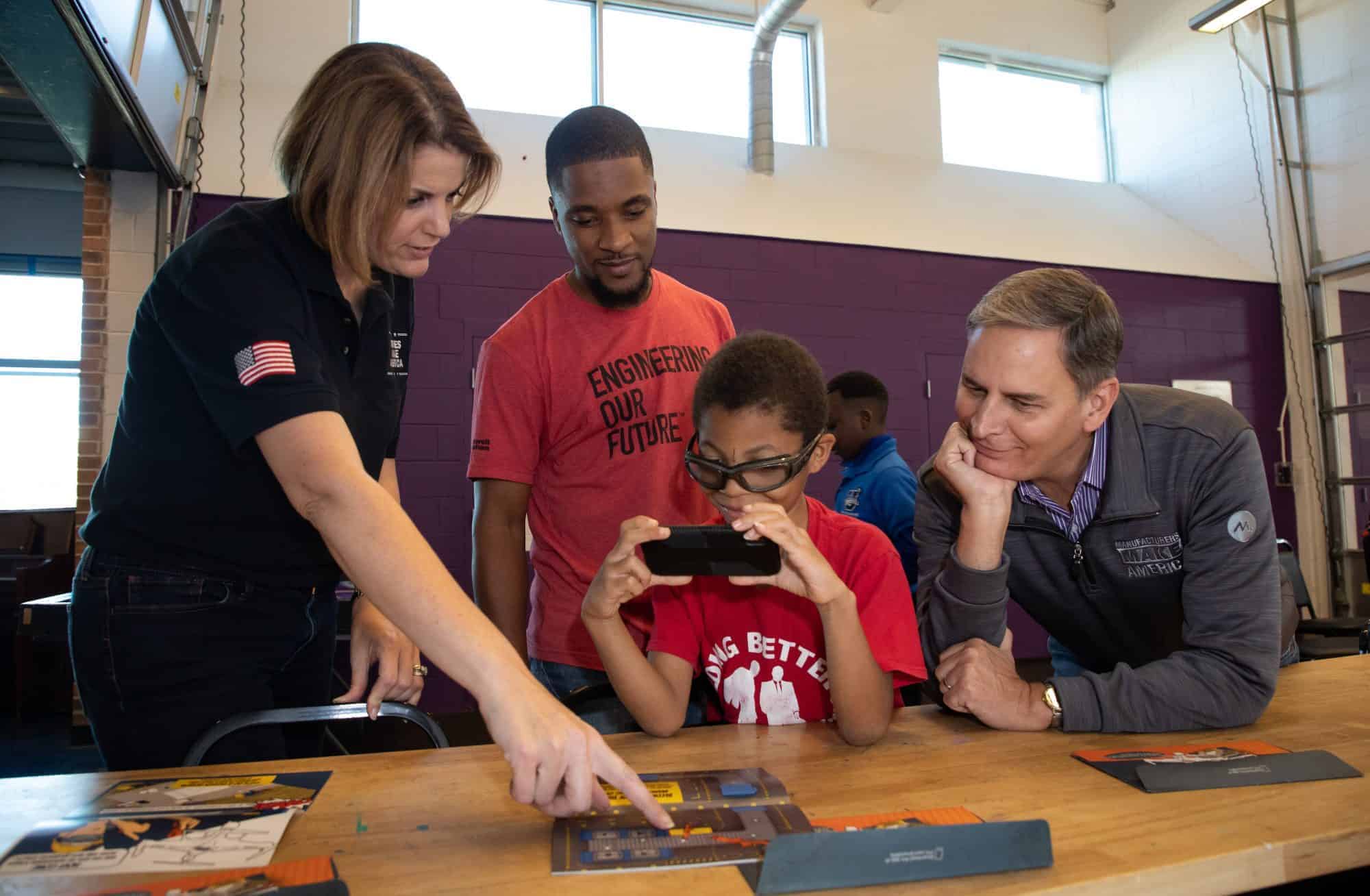
Today thousands of manufacturers and educational institutions across the country are opening their doors to students, parents, teachers and community leaders to celebrate Manufacturing Day. Led by The Manufacturing Institute, the National Association of Manufacturers’ workforce and education partner, Manufacturing Day shows students what a career in modern manufacturing looks like.
The Manufacturing Institute’s Executive Director Carolyn Lee will be in Greensboro, GA, at a Novelis facility.
#MFGDay19 is finally here! I’m headed to @Novelis in Greensboro, GA today. Can’t wait to show students what modern manufacturing looks like! https://t.co/OcDHgo0VYJ pic.twitter.com/efXtrG0Cbb
— Carolyn Lee (@cleeNAM) October 4, 2019
NAM’s President and CEO Jay Timmons will be joining a Manufacturing Day event at a Samsung facility in Newberry, SC.
In Newberry, SC, today to join @SamsungUS for their #MFGDay19 event! Going to be a great day showing students what a career in modern manufacturing can offer. Learn more: https://t.co/y4RjnAjie2 pic.twitter.com/e0m7oomFgk
— Jay Timmons (@JayTimmonsNAM) October 4, 2019
To keep up with the latest Manufacturing Day festivities, check out the MI and NAM on Twitter, plus the dedicated Manufacturing Day Twitter. Join the social media conversation by using the hashtag #MFGDay19 in related posts.
Manufacturing Institute, NAM Seek Creators Through Annual Manufacturing Day Celebrations
Washington, D.C. – The Manufacturing Institute, the education and workforce partner of the National Association of Manufacturers, kicked off a month-long celebration of modern manufacturing today on Manufacturing Day. Held annually on the first Friday in October, MFG Day helps show the reality of modern manufacturing careers in an industry that is vital to our economy. Today, thousands of companies and educational institutions around the nation will open their doors to students, parents, teachers and community leaders to showcase all that manufacturing has to offer.
“Our industry is growing and thriving, but we are facing a workforce crisis,” said NAM President and CEO Jay Timmons. “Over the next decade, manufacturers will create 4.6 million jobs—jobs that are high-skill, high-tech and high-paying—but 2.4 million could go unfilled if we don’t close the skills gap. MFG Day shines a spotlight on these opportunities and allows us to connect with the next generation of creators who will lead this industry into the future.”
Timmons will join South Carolina Gov. Henry McMaster and Samsung Executive Vice President and Head of Corporate Affairs David Steel, along with local students, business leaders and community influencers at Samsung Electronics Home Appliance facility in Newberry, South Carolina. Manufacturing Institute Executive Director Carolyn Lee will travel to Greensboro, Georgia, to visit Novelis and tour its state-of-the-art aluminum recycling center. Novelis Senior Vice President and Chief Financial Officer and NAM board member Dev Ahuja will join Lee.
“MFG Day aims to change the narrative around manufacturing. Many people have no sense of what modern manufacturing looks like in today’s economy. We want to connect with the future workforce—America’s students—and showcase the innovation and collaboration that drives manufacturing today,” said Lee. “MFG Day is an opportunity for anyone looking to join us on this exciting journey to get a firsthand look inside some of the country’s great manufacturing companies.”
First held in 2012 and organized by its founder—the Fabricators & Manufacturers Association, International—MFG Day gives manufacturers the opportunity to address the skills gap, connect with future generations, update the public perception of manufacturing and ensure the ongoing prosperity of the industry as a whole.
-MI-
The Manufacturing Institute is the education and workforce partner of the National Association of Manufacturers. It drives programs and research to promote modern manufacturing and jumpstart new approaches to growing manufacturing talent. For more information, please visit www.themanufacturinginstitute.org.
Manufacturing Institute to Expand FAME Apprenticeship Program
The National Association of Manufacturers, the Manufacturing Institute and Toyota Motor North America on Tuesday announced the operational and stewardship transition of Toyota’s Federation for Advanced Manufacturing Education (FAME) program to the MI.
Scoop: Ivanka Trump, manufacturing group to announce expansion of skilled training program https://t.co/ndd0WRKBfJ
— AlexGangitano (@AlexGangitano) September 10, 2019
NAM CEO Jay Timmons and MI Executive Director Carolyn Lee were joined by Advisor to the President Ivanka Trump at Alabama Robotics Technology Park in Huntsville, AL, for the announcement.
Today, I am visiting the Alabama Robotics Technology Park to learn more about their FAME apprenticeship program and their partnership with @ShopFloorNAM (NAM signed our #PledgetoAmericasWorkers in July and committed to 1.2 Million NEW training opportunities!)
— Ivanka Trump (@IvankaTrump) September 10, 2019
FAME apprentices receive a two-year industrial degree, Advanced Manufacturing Technician, while working in their sponsor’s manufacturing facility. FAME trains students of all ages and backgrounds, from recent high school graduates to experienced manufacturing employees looking to advance their careers.
.@ToyotaPolicy has built an incredible apprenticeship program with FAME. I’m honored that the @TheMFGInstitute will continue and build on that success. https://t.co/66Vz5w8313 pic.twitter.com/qygxa3fHga
— Carolyn Lee (@cleeNAM) September 10, 2019
FAME chapters are currently operating in 13 states, and the MI will expand the program nationwide.
Toyota is proud to have started this workforce development program and see it grow so more American workers can benefit. https://t.co/bqzbgBbrxa
— Toyota Policy (@ToyotaPolicy) September 10, 2019
Education pathways to skilled careers and an expansion of apprenticeship programs are key goals of the NAM and MI’s Creators Wanted Fund, a campaign to inspire more Americans to pursue careers in modern manufacturing.
Thanks again to @IvankaTrump for coming to @TheMFGInstitute’s and @ToyotaPolicy’s FAME apprenticeship announcement! Our industry is stepping up to provide opportunities for Americans to find meaningful careers. https://t.co/qw9ljPPClU
— Jay Timmons (@JayTimmonsNAM) September 10, 2019
For more information, read the MI’s press release.
Attract the Next Generation by Getting Involved in Manufacturing Day
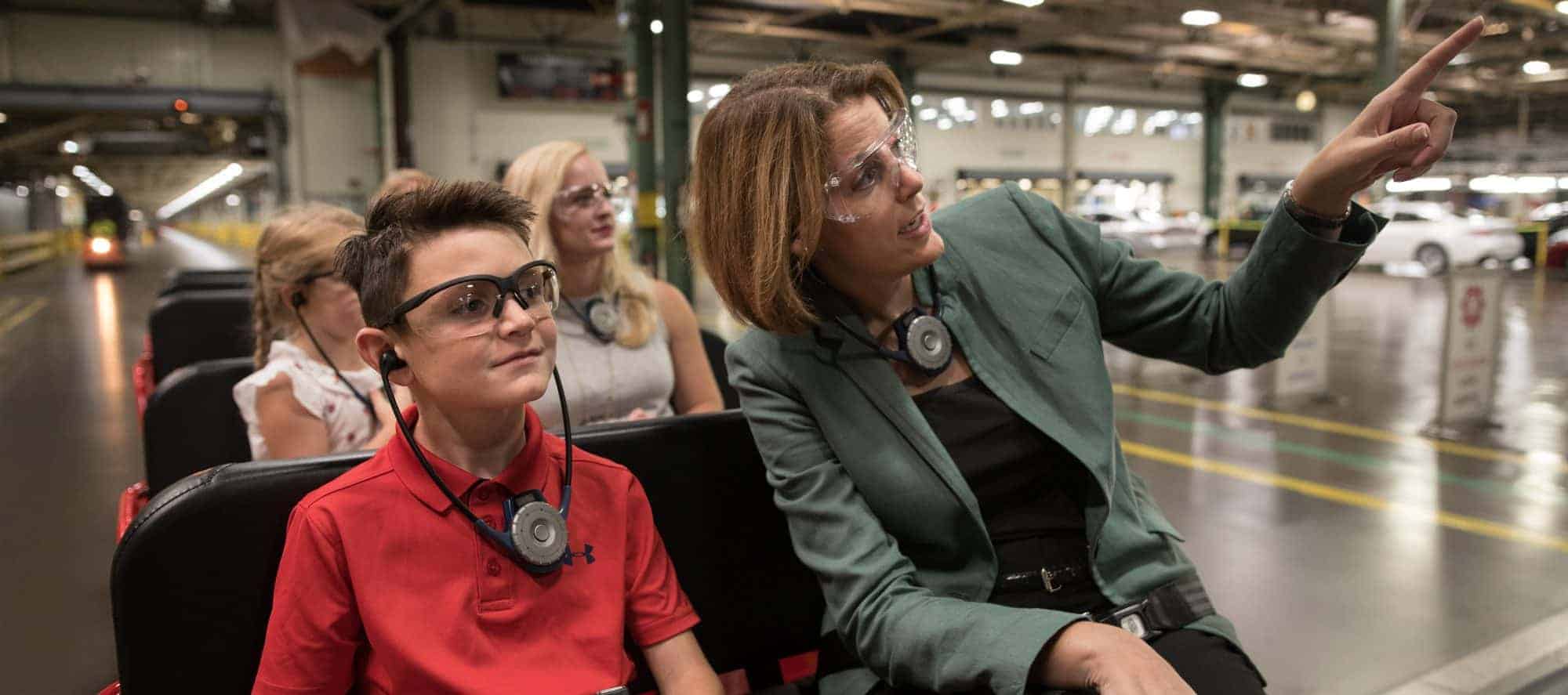
Manufacturing Day, led by the Manufacturing Institute and the National Association of Manufacturers, is kicking off on Oct. 4.
Carolyn Lee, the Manufacturing Institute’s executive director, explains what makes this event unique, why it’s personally important to her and how you can get involved.
What is Manufacturing Day?
Manufacturing Day shows off what modern manufacturing looks like. Kicking off on the first Friday in October—and continuing throughout the month—this annual event helps manufacturing companies and educational institutions open their doors to students, parents, teachers, community leaders and more. Manufacturing Day shows students why they should consider a career in manufacturing and what skills manufacturing companies are looking for in job candidates.
How does Manufacturing Day make a difference for students?
On Manufacturing Day last year, hard material manufacturer CERATIZIT hosted an event in Michigan. At the beginning of the day, they asked the group who was interested in a career in manufacturing. Only three or four students raised their hands. The students then spent the day taking the tour of the facility, trying out CERATIZIT’s products and using CAD software to make their own keychains. At the end of the day, they were asked the same question about who would be interested in a career in manufacturing. This time, there were only three or four students who didn’t raise their hands!
You might think you know what manufacturing looks like today, but seeing is believing — and seeing modern manufacturing firsthand can be life-changing for students. I hope that Manufacturing Day makes a difference in the lives of the students who attend, getting them to seriously consider a career in manufacturing.
Why is Manufacturing Day important to you?
I grew up in a manufacturing family. My dad, grandfather and even my grandmother for a short time worked in manufacturing. When I was a kid, manufacturing was a lot different than it is today — and I still thought it was cool! Now, it’s even more amazing. Manufacturing careers are increasingly high-tech, and technology is increasingly an integral part of the industry. Manufacturing employees are excited about technology, and they’re excited to learn and grow in their careers.
It’s always amazing to see what the manufacturing workforce makes and what goes into making the things that improve our lives every day and how they do it. Manufacturing Day is the way for everyone to see it for themselves.
How can I get involved in Manufacturing Day?
If you’re a manufacturer, plan an event for your community on Oct. 4 (or another day in October), and make sure to register it on Manufacturing Day’s website. If you’re a student, parent or teacher, find events being held in your area using the map on our website.
Heroes MAKE America Fuels Veteran’s Oil and Gas Career
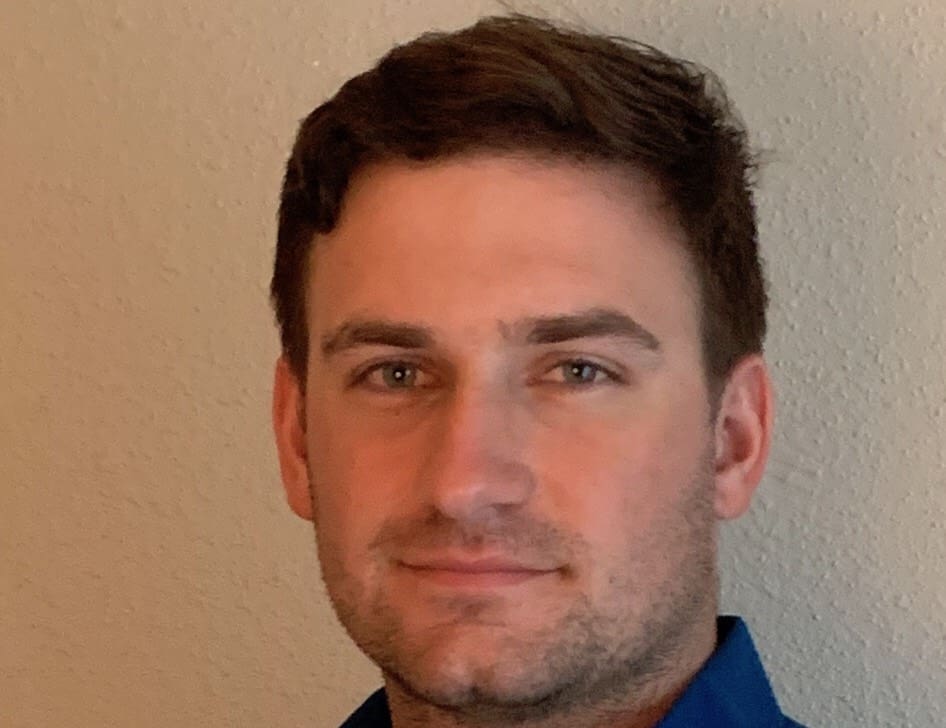
As a child, Josh Matherne dreamed of joining the military. He realized that dream as a team supervisor in the U.S. Army infantry at Fort Hood, where he mentored younger soldiers and helped ensure that they were doing their jobs safely and successfully.
“My grandfather was in the Marines, and he really pointed me in the right direction,” said Matherne. “I always thought it was the right thing to do. As soon as I could serve, I wanted to serve.”
All the while, Matherne was interested in the oil and gas manufacturing industry. When he began to think about a civilian career, the Heroes MAKE America program was a natural fit. The program aims to build a mutually beneficial pipeline between the military and manufacturing, offering transitioning service members in-demand manufacturing skills and training, and educating manufacturers on how to recruit and retain members of the military and their families. As a student in the Heroes program, Matherne expanded his knowledge in manufacturing and tailored his resume to reflect his work ethic, determination and passion for the industry. Through the program’s regular networking opportunities, company tours and training support, the initiative helped him launch his new career.
“The Heroes program gave me an idea of what I was getting myself into,” said Matherne. “It eased my transition by getting me into the civilian mindset and taught me how to interact with civilian workers.”
Like many Heroes MAKE America participants, Matherne initially wondered if his skills would transfer into his field of interest. But shortly after he began his current role as a chemical operator at Occidental Chemical in La Porte, Texas, he found that his military training made him ideal for a position that required discipline and attention to detail. He has already been fast-tracked toward a promotion, and he has found a familiar rhythm that reminds him of his experience as an infantry team leader.
“It’s kind of like the military,” said Matherne. “The family-style team; being a part of something worth being a part of.”
Matherne continues to share open job opportunities within his company and other oil and gas companies in order to help other veterans like him find their next career in a well-paying, growing sector. He’s also mentoring new veteran hires, giving them a sense of what to expect during their transition and teaching them how they can use their past training to succeed in manufacturing.
“It’s a great atmosphere, has great people, and has a similar structure to the military,” said Matherne. “The manufacturing industry loves the drive we have and the discipline we have. They love seeing it, and they love hiring it.”
Learn more about the Manufacturing Institute’s Heroes MAKE America program.
New Report Dives Into Retaining The Aging Manufacturing Workforce
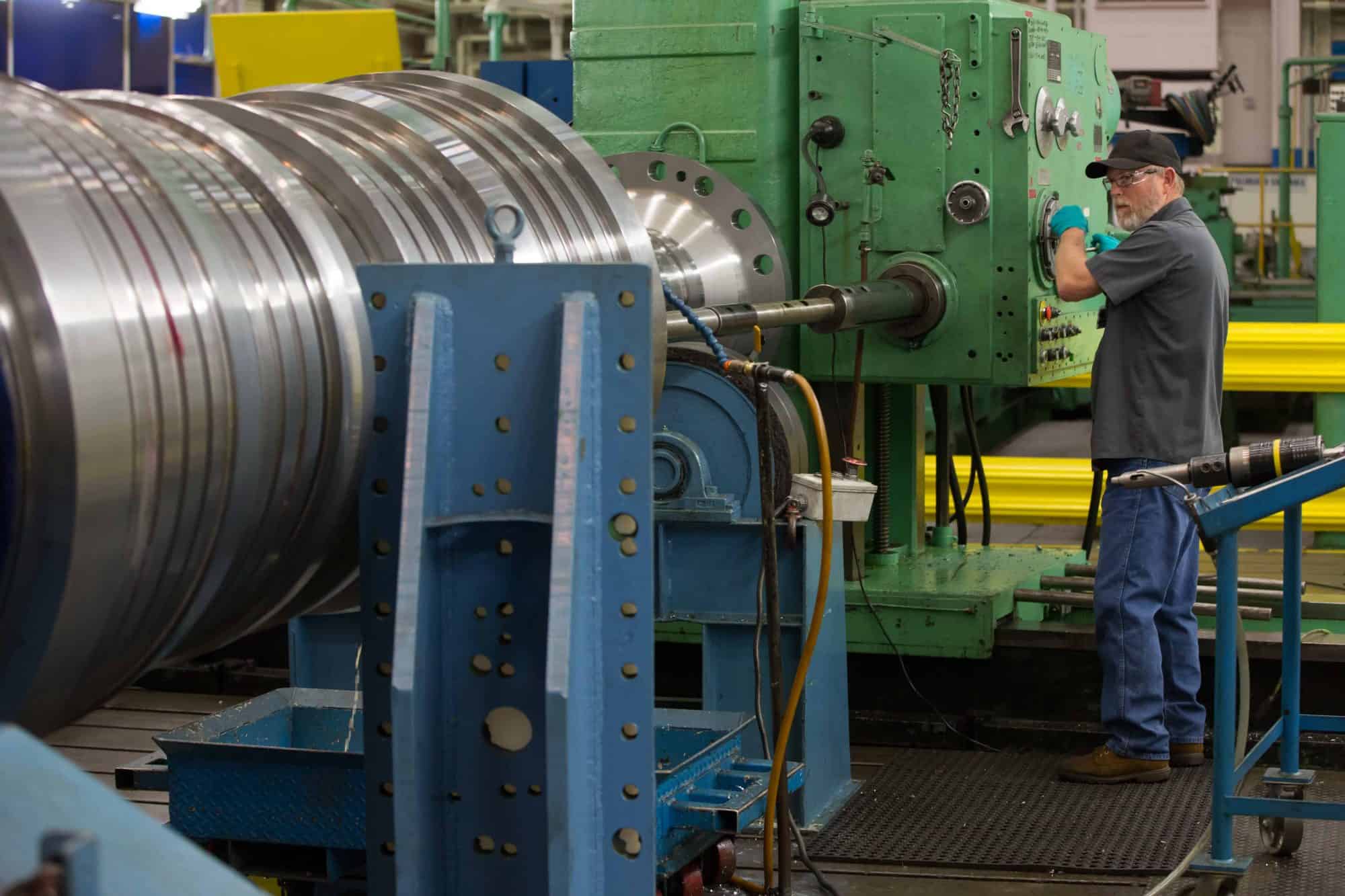
Right now, one-quarter of the manufacturing workforce is over 55 years old. Meanwhile, the manufacturing industry is struggling to attract enough younger workers with the right skills and qualifications. Facing a workforce crisis—with open jobs in manufacturing recently reaching an all-time high—manufacturers are finding that retaining older workers is not only a necessity but an asset.
The Manufacturing Institute’s Center for Manufacturing Research, in partnership with the Alfred P. Sloan Foundation, recently conducted a survey to discover how companies are addressing this shifting demographic challenges.
This workforce issue affects nearly all manufacturers, the study found. Ninety-seven percent of respondents reported that they fear losing institutional knowledge when these workers depart.
“Manufacturing is facing a demographic sea change—leaders in the industry know it, and many are proactively adapting to it,” said Chad Moutray, the Manufacturing Institute’s Center for Manufacturing Research director and the National Association of Manufacturers’ chief economist. “Given the current workforce crisis, other manufacturers should look to the successful initiatives being implemented in the industry and collectively expand on them to develop the workforce of tomorrow. The simple fact is that companies are very concerned about losing their top talent to retirement and are finding creative ways to keep them longer and to train younger workers.”
The study also examined the innovative approaches manufacturers can use to extend older workers’ productivity and help transfer institutional knowledge to the next generation. For example, manufacturers are implementing upskilling and training programs to address the challenges this demographic may experience. Sixty-nine percent of companies said they had on-the-job training programs, and 54 percent said they have internal technical training programs.
“Manufacturers are utilizing the expertise of their older workers, implementing policies and procedures to keep them longer and creating opportunities to pass on their knowledge and talents to the next generation,” said Carolyn Lee, the Manufacturing Institute’s executive director. “The reason for this is clear: unlocking the knowledge of today’s older manufacturing workers is critical to shaping tomorrow’s industry leaders.”
Manufacturing Output Hits All-Time High, Signaling Industry’s Strength
For the past two years, manufacturers have been setting new records when it comes to manufacturing output, and through the first quarter of 2019, the industry has continued to reach new heights.
Four out of five manufacturers remain positive about their company’s outlook, according the National Association of Manufacturers’ latest Outlook Survey, and new Bureau of Economic Analysis (BEA) data find that manufacturers’ level of output hit an all-time high once again. As noted in the recent BEA report, manufacturers produced a total of $2.3852 trillion worth of goods for the economy in the first quarter of 2019, up from $2.3845 trillion in the fourth quarter of 2018.
“Manufacturing output has consistently set new records since the beginning of 2017, and while we have seen softer data so far in 2019 than we might prefer, I would continue to expect the sector to hit new all-time highs throughout the rest of this year,” the NAM’s Chief Economist Chad Moutray said.
In fact, manufacturing accounted for 11.3 percent of real GDP in the first quarter of 2019—and the industry continues to have the largest economic multiplier of any major sector.
“At a time when conventional wisdom holds that the sector is less important than it once was, all of these data show manufacturing in the United States is alive and kicking, producing more goods than ever and continuing to be a bright spot in the economy,” Moutray said.
The industry’s continued success has created many new jobs as well. Manufacturing job openings were also at an all-time high in May with 509,000 open jobs, according to the Bureau of Labor Statistics’ Job Openings and Labor Turnover Survey. This solid job creation is actually exacerbating an existing challenge in the industry: a lack of enough skilled workers.
Manufacturers could have 2.4 million unfilled jobs by 2028 unless the right steps are taken today to build the workforce of tomorrow. The NAM and The Manufacturing Institute are leading the way toward solving this workforce crisis, and they have launched a $10 million Creators Wanted campaign, which plans to fill 600,000 manufacturing jobs by 2025.
Heroes MAKE America Graduate’s Manufacturing Career Takes Flight
"Once I got to the description of Heroes MAKE America, I knew that was what I wanted to do."
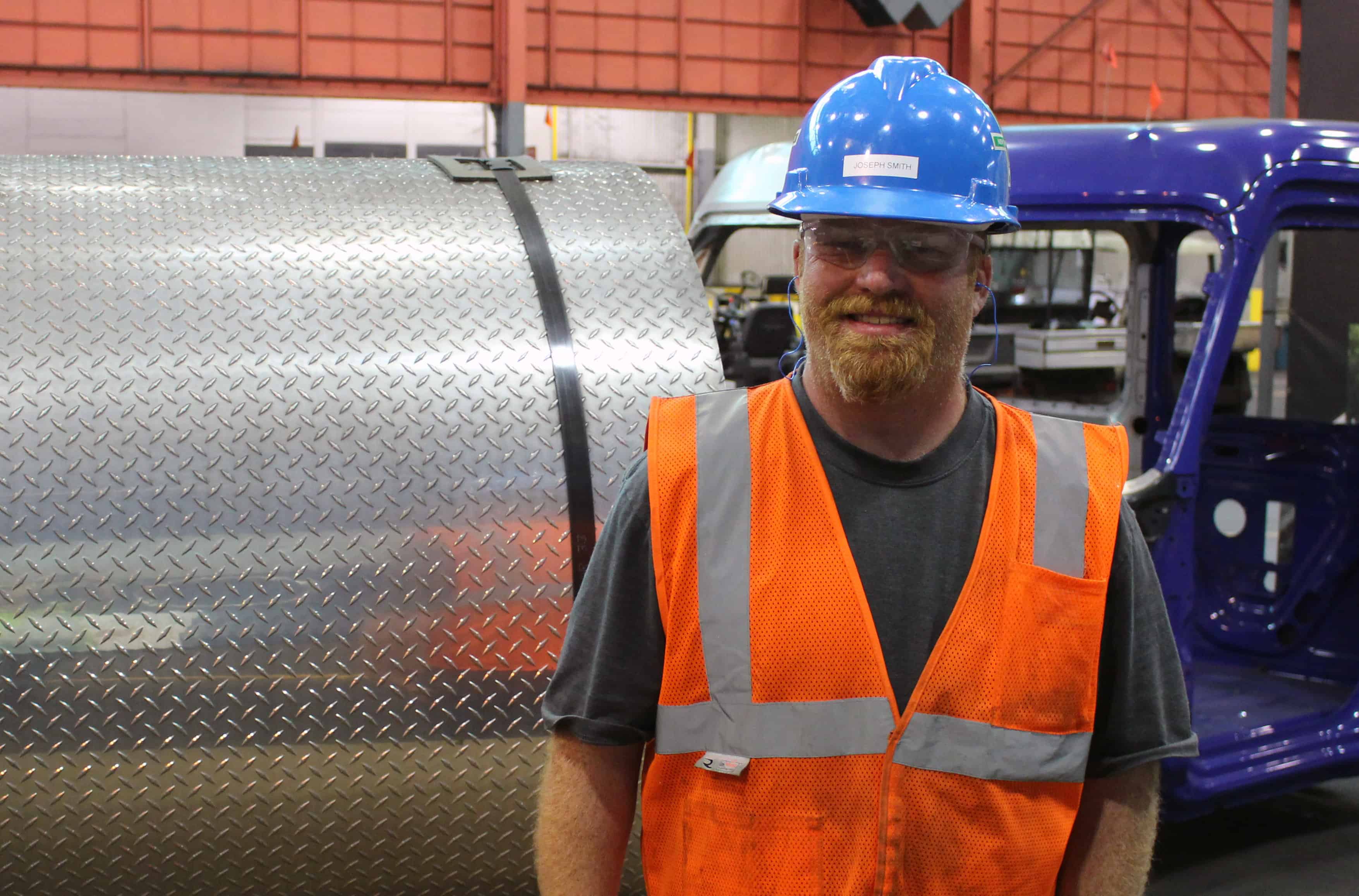
Joseph Smith spent 20 years in the military, beginning as a mechanic working on Apache helicopters and serving for most of his career as a maintenance supervisor in the U.S. Army. Today, he’s a maintenance unit supervisor based in Davenport, Iowa, at Arconic—a worldwide light metals manufacturer creating products for sectors from aerospace to consumer electronics.
Initially, Smith didn’t know how he’d adapt to civilian life after two decades in the military, but he was immediately impressed with The Manufacturing Institute’s Heroes MAKE America program, which aims to connect manufacturers with highly qualified candidates and offer transitioning service members manufacturing-related training and support, creating a pipeline between the military and manufacturing.
“I was trying to decide what I wanted to do after the military,” said Smith. “I was looking into the different programs and apprenticeships the army offered, and once I got to the description of Heroes MAKE America, I knew that was what I wanted to do.”
Smith grew up interested in how things are made. “I used to watch that How It’s Made series on TV,” he said. For him, his new job makes sense. He still enjoys watching how aluminum is made from raw material and seeing it become a finished product like the wing of an airplane.
“There’s so much that goes into the products that we use and the things we see on a daily basis,” he said.
Smith has been impressed by the similarities between his role in the military and his current position. While the transition to civilian life could have been challenging after two decades in the military, he immediately found manufacturing was uniquely suited to his skills.
“I could almost instantly tell,” Smith said. “The way that the maintenance portion of Arconic runs was very similar to, day-to-day, how working in the military was.”
Smith encourages other veterans to consider making the same move he did and emphasizes the number of jobs available to skilled workers.
“There are a lot of people who don’t realize how valuable a career in manufacturing can be,” says Smith. “Especially for a veteran coming out of the military, they don’t realize how in-demand their skills can be. Everything you do can be translated into a manufacturing career. And manufacturing employers are hiring like crazy.”
Learn more about the Manufacturing Institute’s Heroes MAKE America program.
Heroes MAKE America Student Makes Tracks at Goodyear
“As manufacturing goes more autonomous, there are more skilled positions available.”
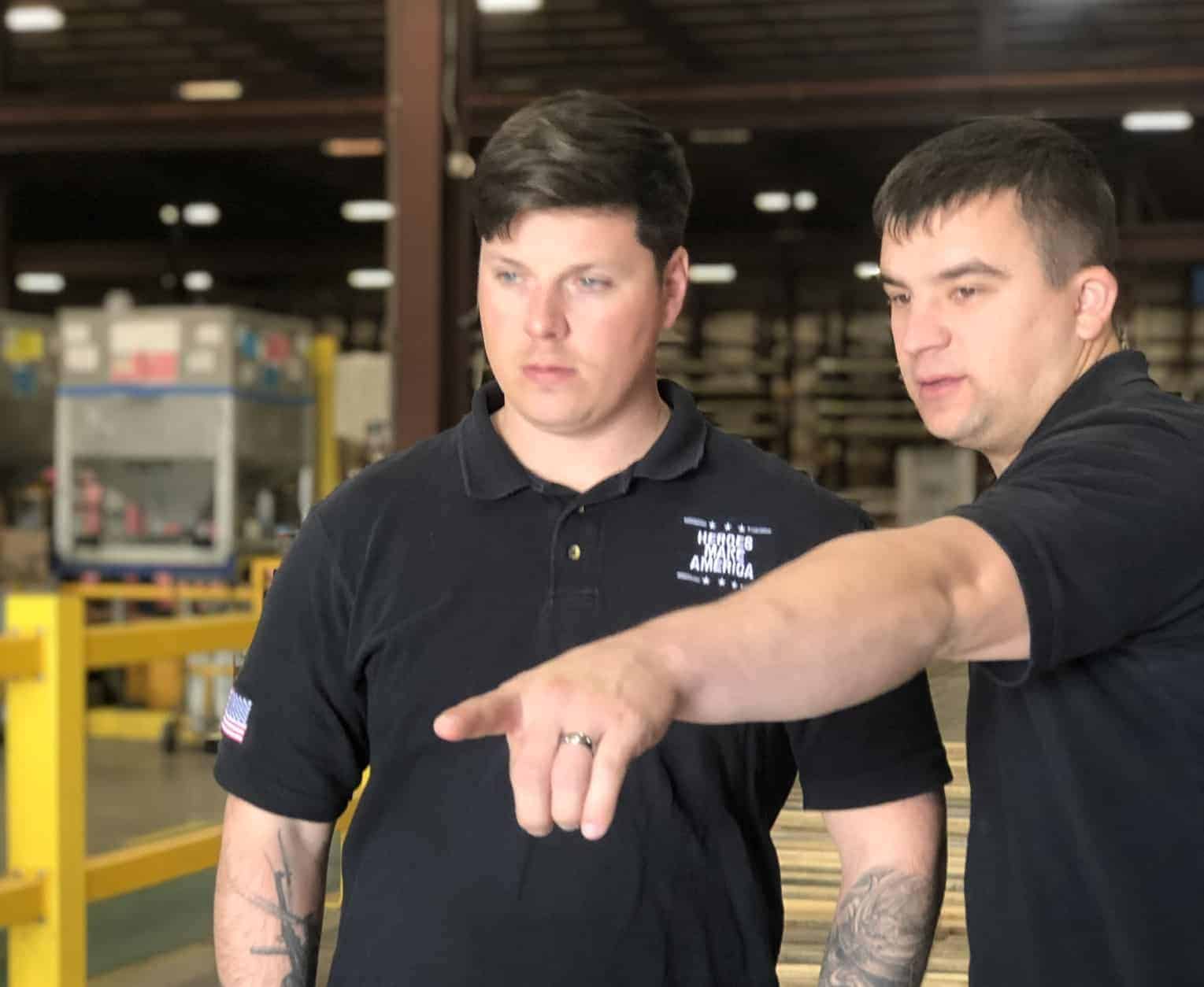
Jason Gustine has always enjoyed learning how things are made. As an area manager at the Goodyear Tire & Rubber Company in Topeka, Kansas, he taps into his lifelong interest while making use of the people skills and the processes he learned in the military.
“I was worried it would be a culture shock, and I wasn’t going to fit in,” said Gustine. “But going into a manufacturing facility, it fits exactly with the military mindset. That was the biggest surprise—how easy that transition was.”
Military service runs in Gustine’s family. His father is a former helicopter pilot who served in Vietnam, and Gustine was determined to follow in his father’s footsteps. He joined the U.S. Army in January 2008 and served 11 years in the military—as a mechanic, a Blackhawk crew chief, a standardization instructor and eventually a leader in quality control, making sure helicopters were safe to fly.
When he was beginning the transition out of military service, Gustine joined up with the Manufacturing Institute’s Heroes MAKE America program, which aims to connect manufacturers with highly qualified candidates and offer transitioning service members manufacturing-related training and support, creating a pipeline between the military and manufacturing. Through the program in Fort Riley, Kansas, he realized that manufacturing was a perfect next step for him.
“It fit into my wheelhouse,” he said. “A lot of it was maintenance and mechanics, which I’d been doing my whole life. Making sure that the product they’re sending out is the right quality. And every Friday, we would go tour a different facility. That’s what opened my eyes to what manufacturing had to offer.”
He credits the Heroes MAKE America program with helping to smooth the transition out of the military.
“Getting out of the military is a very stressful time,” he said. “I had all these skills—I had worked on helicopters for 10 years—but I didn’t really know how that was going to transition to the civilian world.”
Gustine has been impressed with the way manufacturing has integrated high-tech processes into daily operations without lessening the need for skilled employees, and the industry continues to emphasize the need for new workers.
“People have this idea that it’s all automated now, which is not true at all,” he said. “As manufacturing goes more autonomous, there are more skilled positions available.”
Gustine is enthusiastic about what manufacturing has to offer and encourages other service members to consider the wide range of available roles.
“The manufacturing field is so big—you can do everything from making tires in Topeka to building cars in Ohio,” Gustine said. “Whatever you want to do, you can find your niche or find your spot. It opened my eyes to how much manufacturing there is in the United States. Find out where you want to go, and the sky is the limit in manufacturing.”
Learn more about the Manufacturing Institute’s Heroes MAKE America program.
